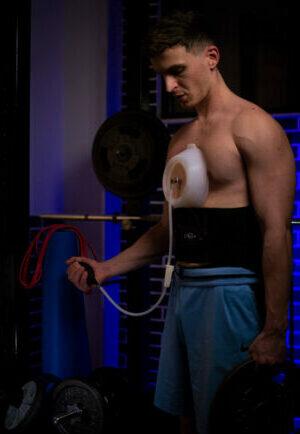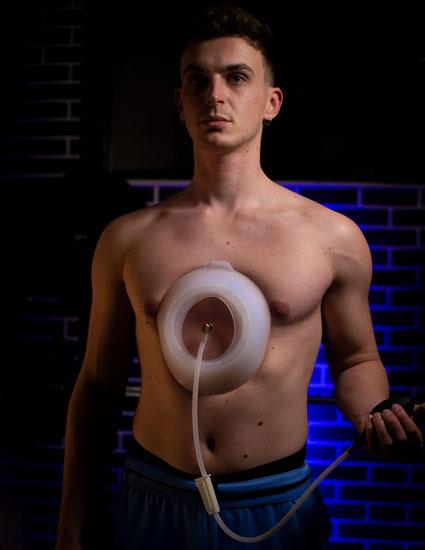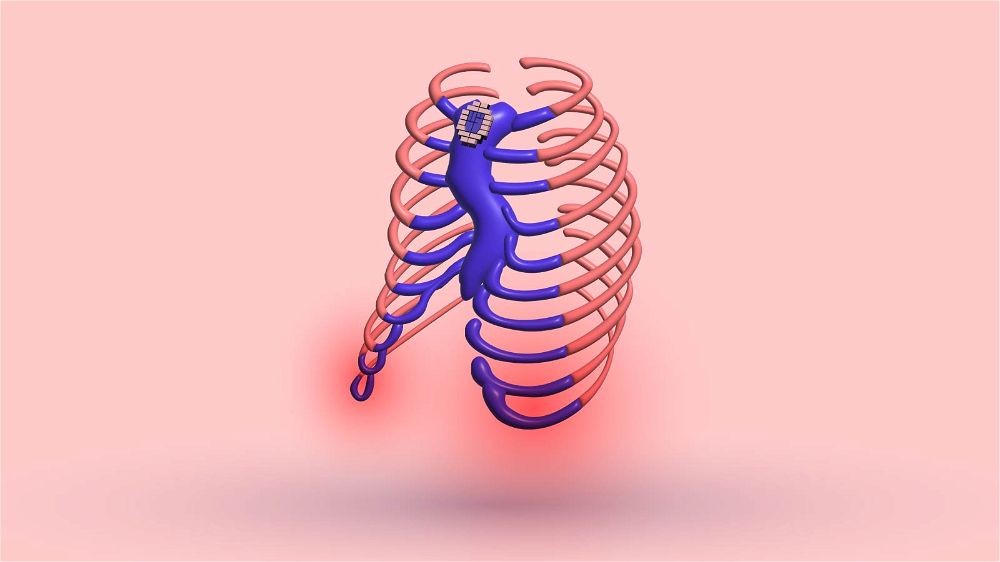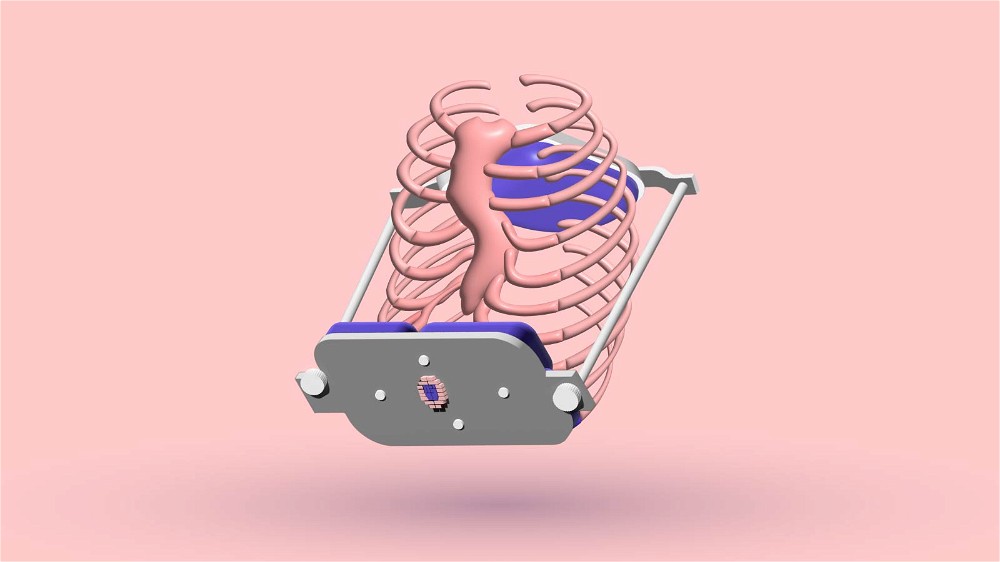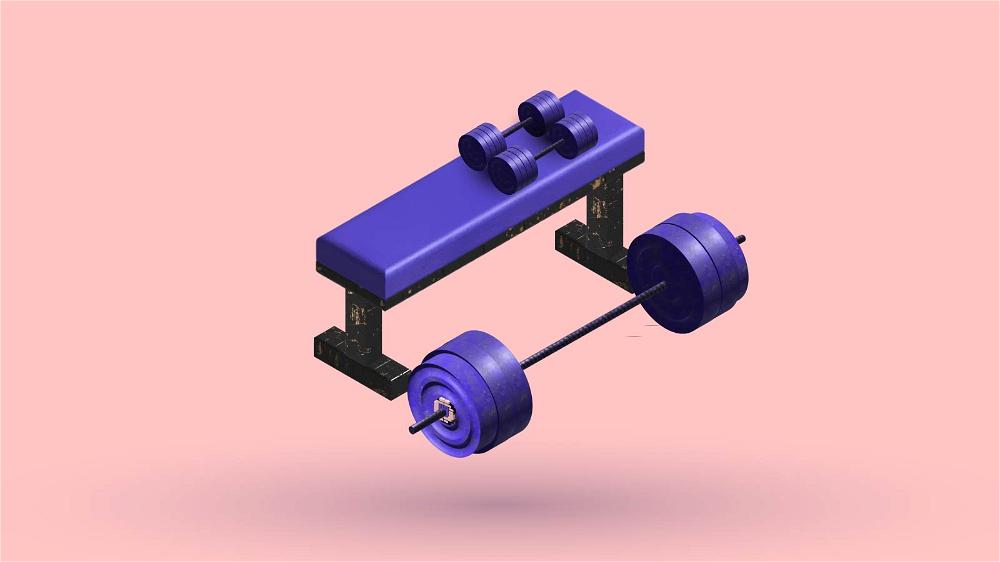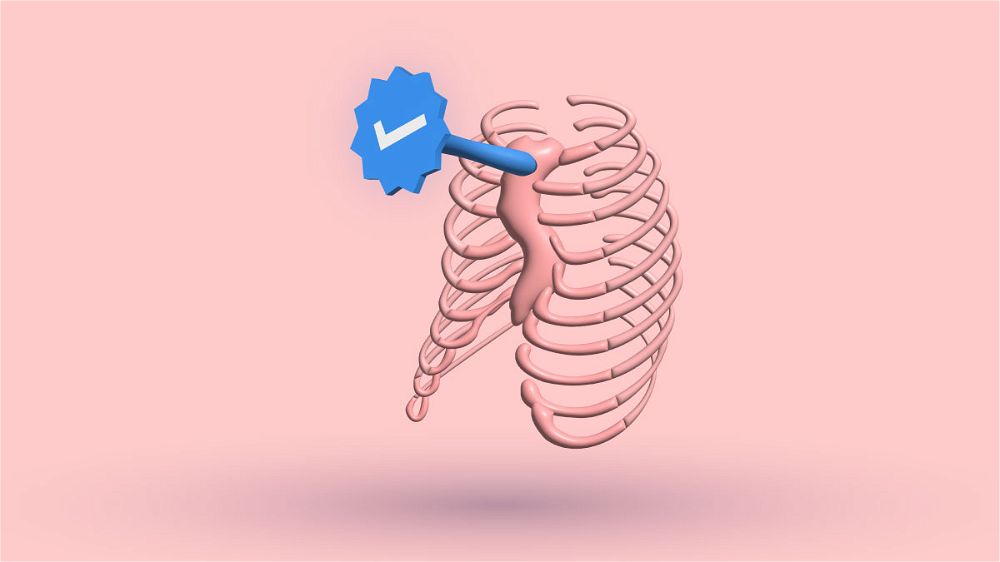If the pecs are wide apart or irregularly placed, the muscle placement can sometimes produce the appearance of pectus excavatum.
Also, it might change the look of the chest cavity, making it appear much deeper than it actually is.
What is muscle insertion?
The simplest way to understand muscle insertion is to imagine the end of the muscle that attaches to the bone.
Having longer insertions may make “filling” the center of the sunken chest with muscle more challenging.
Strength
Muscle insertion can also affect even how much weight we can lift.
One of the most complex aspects influencing our muscle strength is where our muscles insert.
The lower our strength is, the weaker we are during exercise. Seeing results is slower. This will undoubtedly affect the appearance of our chest.
The insertions are not visible, and even minor alterations can result in considerable differences in how the body looks.
That is one of the reasons why some people with less muscles can oddly lift more weight than people with larger muscles.
So, muscle insertion can be a big part of how our chest will look.
Even if we train hard, we can still not be delighted with our chest appearance because of the muscle insertion, and they can still appear asymmetric.
What causes uneven chest muscles?
Because of muscle insertion, the symmetry of our pectoral muscles can be irregular. It is inherited, and there is little that you can do because the lower upper muscle area of the chest is also essential.
Even professional bodybuilders are often unable to get an even and perfect chest formation due to the insertion of their muscles.
Some people define bad chest genetics as the gap between their major pectoralis muscles or asymmetry on each side, similar to pectus excavatum.
Aside from genetics, it can also be due to an imbalance in training, causing one of your pecs to appear larger than the other. Yet, the weaker side of the body might cause the chest to appear unequal.
One side of the body may have a 40-50% better capacity than the other, resulting in an asymmetry. But even if you do everything correctly while training, sometimes we can’t fix the chest asymmetry because of genetics and muscle insertion.
Injury
Uneven chest muscles aren’t caused only because of muscle insertion. It could be due to a temporary injury. If that is the case, it is best to be cautious to avoid long-term problems.
Can we change our chest muscles' insertion?
Unlike the majority of muscles in the human body, which typically are equal in length, the pectoralis major (the chest muscles) has diversity in muscle fiber length and can lead to an asymmetric chest appearance.
Changing the pectoral muscle's insertion on the sternum is impossible because of its constant length and broadness along the sternum.
Yet, we can change the volume of a muscle and shape it with more specialized workouts for chest muscle growth, but we cannot change its insertions.
Of course, you should not be discouraged because you can control or obtain a healthy and well-shaped appearance with proper training and nutrition.
Although muscle insertion has a significant impact on our muscular appearance, we may still do everything we can to appear well-shaped.
Study
A study found that incorrect placement of the primary pectoral muscle may cause the development of pectus excavatum. The pectoral muscle is positioned more superiorly in pectus excavatum sufferers.
The study found that the primary pectoral muscle, which elevates the sternum, can diminish its effect when the muscle is positioned irregularly on the thoracic wall.
Surgeons should adjust the significant pectoral muscle to its correct anatomical position to avoid recurrence, according to doctors.
If you are unsure if the problem is due to muscle insertion or a pectus excavatum deformity, please get in touch with a doctor and seek professional advice.
Bottom Line
Regardless of whether we have pectus excavatum or not, we should be aware of the importance of the muscular insertion of the chest.
But I always suggest calling a doctor so you can be sure what causes that chest appearance.
Your chest muscles' appearance also links with your genetics. Genetics can influence how easily you gain muscle in a specific area, such as your chest.
Weight training can help you grow muscle and change your appearance. Consistently strengthening your chest muscles with weightlifting will help you maximize muscular size and strength. Having a personalized program will undoubtedly provide you with the quickest results.
I hope you find this blog post helpful. Thank you for reading.
5 Sources
- Duquette S, PTS MWN BHSc, PTS SD and MWN BHSc. Muscle Size vs Strength: Is Gaining Muscle Mass Good for Gaining Strength? [Internet]. Outlift. 2021 [cited 2023 Feb 9]. Available from: https://outlift.com/muscle-size-vs-muscle-strength/
- About Bad Chest Genetics, and Whether You Can Fix Them [Internet]. [cited 2023 Feb 9]. Available from: https://www.healthline.com/health/bad-chest-genes#vs-good-chest-genes
- Solari F, Burns B. Anatomy, Thorax, Pectoralis Major Major. In: StatPearls [Internet]. Treasure Island (FL): StatPearls Publishing; 2022 [cited 2023 Feb 9]. Available from: http://www.ncbi.nlm.nih.gov/books/NBK525991/
- Looking into pec implants, will there ever be a surgery that can change pectoral insertions? [Internet]. RealSelf.com. [cited 2023 Feb 9]. Available from: https://www.realself.com/question/england-united-kingdom-pec-implants-surgery-change-pectoral-insertions
- Nagasao T, Shimizu Y, Morotomi T, Takano N, Jiang H, Kishi K. Irregular location of major pectoral muscle can be a causative factor of pectus excavatum. Med Hypotheses. 2014 May;82(5):512–7.


